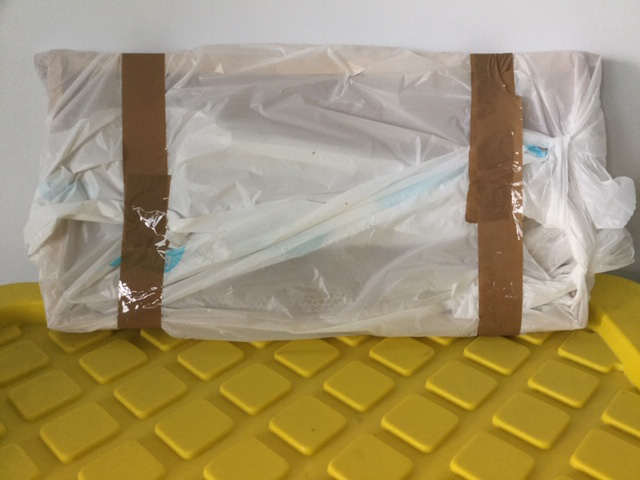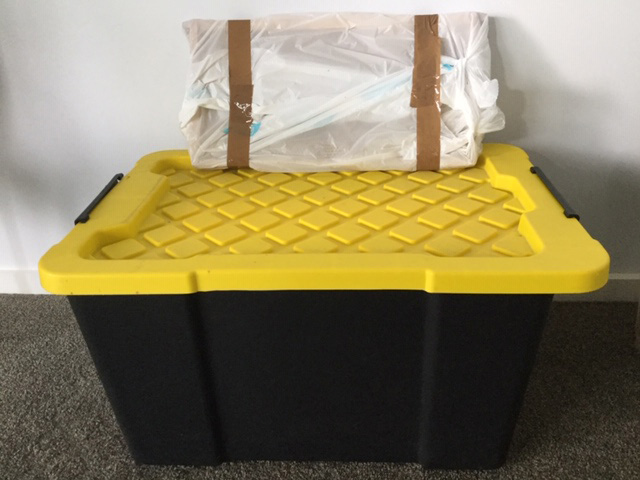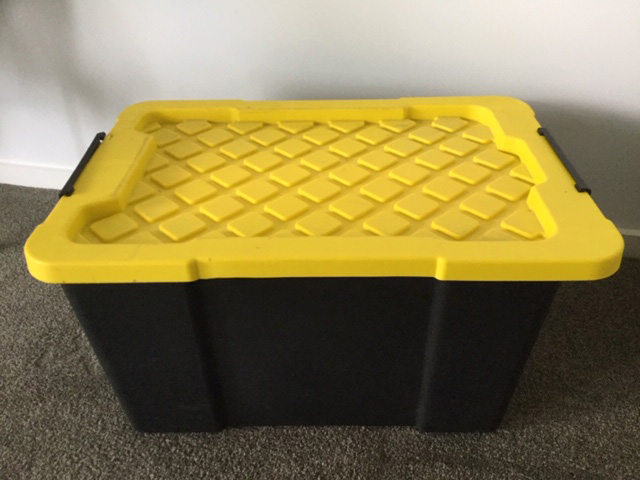
Australian beekeepers, depending on where they live, need to think about preparing their hives for the winter during fall (between March and May).
In countries located in the northern hemisphere, such as the U.S.A. or U.K., the timing of the winter shutdown will be different, and the methods used there will vary according to climate.
For beekeepers in the northern states and territory of Australia where the climate is milder, the time to begin closing their hives down for winter will vary, or it may not happen at all in tropical areas.
Where I live, in Victoria, the most southern mainland state, I need to start thinking about shutting my hives down for the colder months during fall and this means removing a super or two and storing the frames that are inside.
Why Do I Need To Store Frames?
In winter the colony of bees forms a cluster to keep warm and they do this when the air temperature is between 10 to 14 degrees Celsius (or 50 to 57 degrees Fahrenheit).
This cluster is located in the central area of the hive which is the warmest, so the bees are not using most of the area around them.
The extra super or supers and their frames are too many for the cluster of bees to keep warm and they expend too much energy trying to do so.
Storing frames of wax and honey securely is important because you need to reuse them in the spring when the weather improves and the colony quickly needs room to expand.
You don’t want to discover in spring that your frames have become infested with wax moth larvae or been eaten by hungry mice.
There are three types of frames that you may have to store over winter:
- First of all, there are frames that contain brood.
- Secondly, there are frames partially filled with honey.
- Finally, there are frames full of capped honey.
These three types of frames need some form of preparation before they can be stored. Preparing frames with brood and frames partially filled with honey takes a bit more time than preparing frames of capped honey.
How To Prepare Frames With Brood
It’s not all that often that you store frames that have brood in them. Of course, you don’t want to kill the brood, so you need to allow the bees to hatch out first before you remove the frames and box for storage.
You might face this situation if you have a hive with a double brood box and no queen excluder. There will be brood in the top and bottom box, but you want to take the top box and frames away and store it and the frames for winter.
In this situation, you need to allow more time before removal, perhaps two or three weeks.
- Take off the top brood box and shake all the bees into the bottom brood box.
- Then, place a queen excluder on top of the bottom brood box.
- Return the top brood box and the lid. The nursery bees will move through the gaps in the queen excluder to look after the brood in the top box, however, the queen can’t move up because she is too large. Therefore she won’t be able to lay any eggs in the top box.
- Leave the hive alone for two to three weeks to allow all the brood in the top box to hatch. Then, the box and the frames that are free of brood can be removed and stored.
How To Prepare Frames Partially Filled With Honey
Some frames that need storing will be partially full of capped honey. Storing frames that contain some uncapped honey can be tricky because if the honey isn’t ripe it will run out of the cells and create a sticky mess inside the bag you place it in.
Before I explain it though, it’s not essential to remove the honey from partially filled honey frames before storage. It’s just a method I like to use.
Ripe honey is ready to eat and it’s moisture content is low, around 18%. The bees will have capped it with wax, but not all cells on the frame may have been capped.
I’ve successfully used the following method to remove honey from partially filled frames before I store them. It’s a good method, because it allows the bees to do the work of removing the honey.
- First, I take each frame and score the surface of the capped comb with a scratcher before I place it back in the super. (A scratcher is a tool with a handle and very sharp prongs). I repeat this process until all of the capped honeycomb has been scored.
- Then I put a queen excluder on top of this super and carefully invert it before I place it back on the hive. The queen excluder stops the frames from falling out when the box is turned upside down.
- Because the cells are now facing downwards, the honey can flow out freely through the excluder into the bottom box where the bees are waiting to clean it up and store it in the lower areas of the hive. As the cells are facing downwards the bees can’t store the honey in the cells.
- After a few days, you will have clean frames that can be stored for winter.
I’m able to use this method because my honey supers are all of a smaller size and so are not too difficult or heavy for me to turn upside down. If you are using a full-sized box for your honey super and you want to try this method, it might be a good idea to get help from another beekeeper.
I use this method because I found it works for me and I like to store clean frames, but as I said it’s not essential to remove the partially filled honey frames before storage.
Storing Bee Frames
Because I live in a region of Australia that has reasonably mild winters I use a straightforward method of storage.
Whether storing frames that once had brood, frames that were or are partially filled with honey, or frames that are full of capped honey, the method I use is the same.
- Each removed frame is individually wrapped in a large plastic garbage bag that I have purchased from the supermarket.
- I tie up the bag and use strong tape to secure it before I place it in the freezer for two days. Freezing the frames in this way kills any Wax Moth or other larvae.
- I don’t have a large freezer so I can only place one frame at a time inside.
- After forty-eight hours the frame is then placed in an airtight storage bin for the winter. I use one similar to these bins available on Amazon. However, they come as a pair, so if you only want a single tub, this one should also do the trick. Each storage bin should be large enough to fit a full super’s worth of frames.
- Once full of frames, the storage bin is placed in a cool dark place until the frames are needed again in Spring.



Conclusion
In other regions of Australia and in other countries of the world the method of storing bee frames will most likely be different. Every beekeeper may have a different method they like to use.
However, the reasons for storing frames during winter are the same.
Winter storage of bee frames is necessary to ensure the health of your colonies. It helps the bees maintain their winter cluster at the required temperature because they don’t have to keep a large area warm. It also protects the hive against pests such as wax moths and mice.
